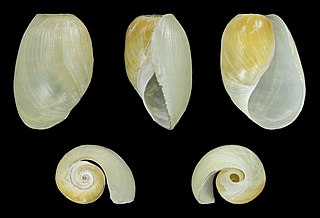
Chalcid wasps are insects within the superfamily Chalcidoidea, part of the order Hymenoptera. The superfamily contains some 22,500 known species, and an estimated total diversity of more than 500,000 species, meaning the vast majority have yet to be discovered and described. The name "chalcid" is often confused with the name "chalcidid", though the latter refers strictly to one constituent family, the Chalcididae, rather than the superfamily as a whole; accordingly, most recent publications (e.g.,) use the name "chalcidoid" when referring to members of the superfamily.
Baeoentedon is a genus of hymenopteran insects of the family Eulophidae, they are parasitoids of whitefly from the family Aleyrodidae which are found on trees of the genus Ficus. They have been recorded from Australia, China, India, Indonesia and Florida. A fifth species, Baeoentodon farazi, was described from Karnataka, India, in 2017.
Ceranisus is a genus of hymenopteran insects of the family Eulophidae. They are parasitoids of thrips of the order Thysanoptera and may be important in their biological control.

Galeopsomyia is a New World genus of hymenopteran insects of the family Eulophidae. The genus is a hyperparasitoid of other gall-inducing wasps of the genera Eurytoma and Torymus.

Melittobia is a genus of hymenopteran insects of the family Eulophidae.
Asceles is a genus of stick insects in the tribe Necrosciini. Some of the species of Asceles have a distribution in Malaysia and Singapore.

Aades is a genus of beetles in the family Curculionidae, commonly known as weevils. These insects are found in various parts of the world, including North and South America, Asia, and Europe. They are generally small in size, with most species measuring between 2 and 7 millimeters in length.

Akera bullata, named the royal flush sea slug, is a species of sea snail, a marine opisthobranch gastropod mollusk in the family Akeridae, a family that is related to the sea hares. This species is the only European representative of the genus Akera.
Aagaardia is a genus of fly in the Chironomidae family. Aagaardia has been found in Finland, the mainland of Norway and Russia.

Anagyrus is a large genus of parasitic wasps from the family Encyrtidae. Anagyrus is distributed throughout the world. A subgenus of Anagyrus is known as Nesoanagyrus

Van Sung's shrew, also known as Cao Van Sung mountain shrew is a species of shrew in the Soricomorpha order. Specimens of Chodsigoa caovansunga have been found in Vietnam.
Gordon Gordh is an American entomologist.
Entiinae is a subfamily of the chalcid wasp family Eulophidae. It was formerly better known as the Euderinae but this name was determined to be a junior homonym. It consists of 18 genera.
John Stuart Noyes is a Welsh entomologist.

Leucospis dorsigera is a species of wasp belonging to the family Leucospidae.

Tetramorium hispidum is a species of ant in the subfamily Myrmicinae. Tetramorium hispidum differs from similar ants in the Myrmicinae subfamily by the structure surrounding the ant's antennal insertions. Short, stubble-like hairs exist on the pronotum and frontal carinae. The antenna of Tetramorium hispidum contains 11 segments.

Aphaenogaster uinta is a species of ant in the family Formicidae.

Camponotus quercicola is a species of ant in the family Formicidae that is endemic to California and commonly nests in oak trees, as they usually inhabit oak forests.
Parachalcerinys is a genus of wasp. As of 2018, three species are recognized, which are all found in Australia.
Baeoentedon bouceki is a species of wasp, one of the first three members of the genus Baeoentedon to be discovered in China. It is less than a millimetre in length, with a head slightly wider than the middle portion of the body. Only one specimen has been studied, collected from Hainan in 1983. As that specimen is female, the appearance of males is unknown.










